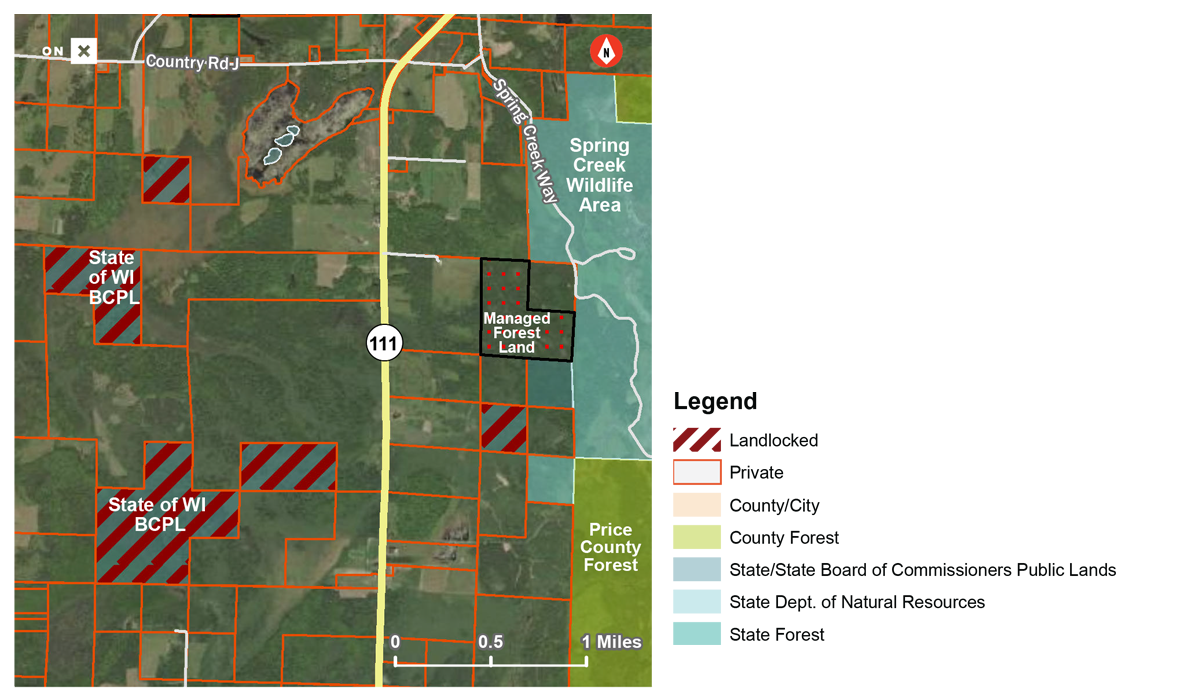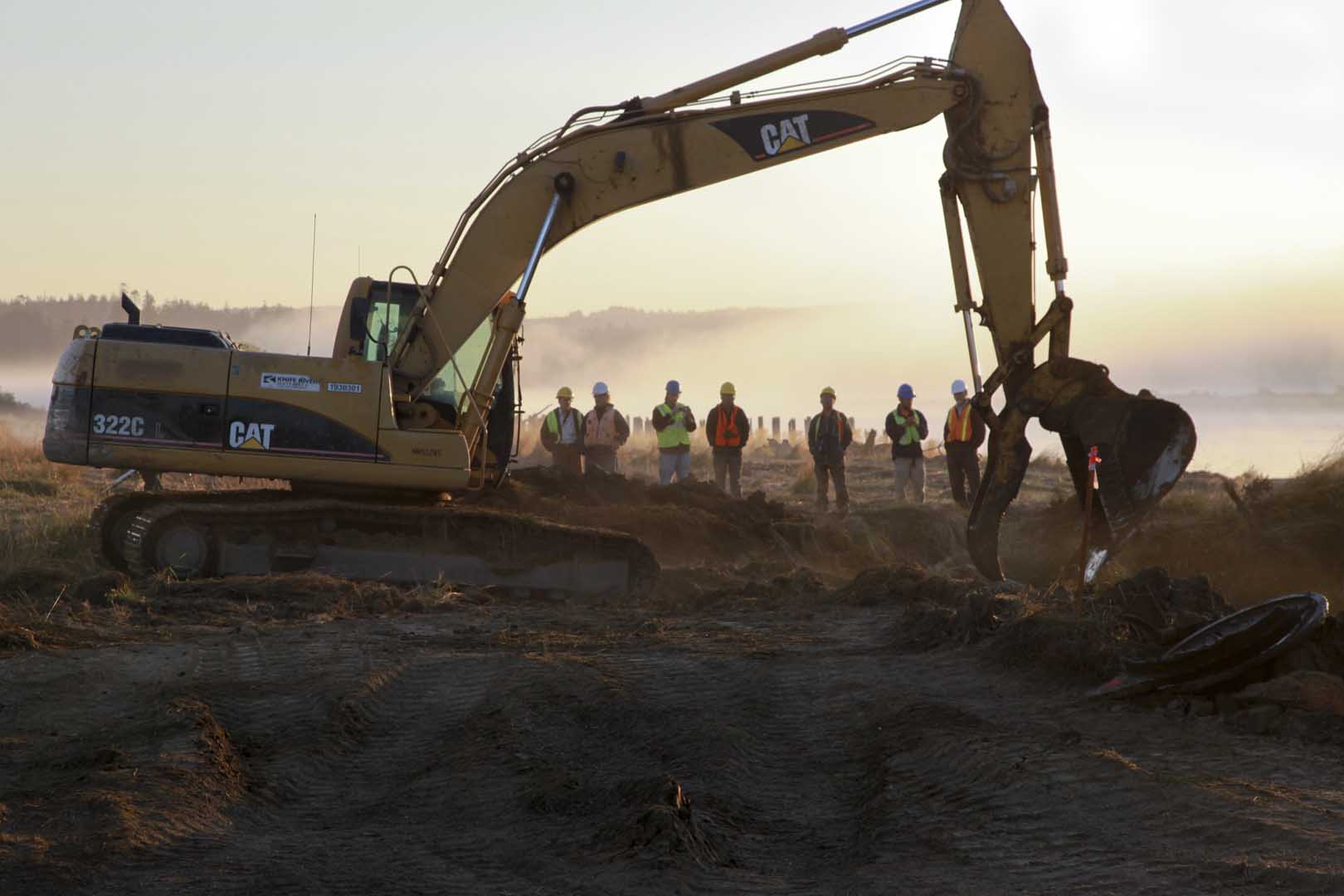With today’s signing of the Great American Outdoors Act fully funding nation’s most important access program, new report details the extent of inaccessible public lands in the Upper Midwest
The Theodore Roosevelt Conservation Partnership and onX announced today that more than 303,000 acres of public land in Minnesota and Wisconsin are entirely landlocked by private land and, therefore, inaccessible to hunters, anglers, and other outdoor recreationists.
The new report is an expansion of a two-year effort to analyze the amount of landlocked public lands in the Pacific and Intermountain West, which to date has shown that nearly 16 million federal and state acres have no permanent legal access because they are isolated by private lands.
The report’s publication is timely in the wake of one of the biggest conservation wins in recent memory. Just today, President Trump signed into law the Great American Outdoors Act, securing full funding for the Land and Water Conservation Fund, the federal program best suited to improving and expanding outdoor access to public lands across the country.
The Findings
Using today’s leading mapping technologies, the collaborative study found that more than 248,000 acres of public lands in Minnesota and more than 55,000 acres in Wisconsin are landlocked and inaccessible to the public without private landowner permission. The detailed findings are now available in a new report, “The Upper Midwest’s Landlocked Public Lands: Untapped Hunting and Fishing Opportunities in Minnesota and Wisconsin,” which also unpacks the stakes of the problem and its historical roots.
“Through our ongoing collaboration with onX, we have been able to identify parcels of land that belong to taxpayers, yet they are unable to take advantage of the vast outdoor opportunities on these lands,” said Joel Webster, Senior Director of Western Programs at the Theodore Roosevelt Conservation Partnership. “It is our hope that with this information, policymakers can see the problem, identify solutions, and work to ensure that sportsmen and sportswomen can access the lands that belong to them.”
“We know how important public land access opportunities are to hunters and anglers all across the country,” said onX access advocacy manager Lisa Nichols. “Especially in places where the majority of the landscape is privately owned, GPS technologies have enabled outdoor recreationists not only to find new opportunities on public lands, but also to notice landlocked parcels that could offer more of these opportunities if there was a legal way to access them.”
While the analysis looked at public lands managed by different levels of government—including federal, state, county, and municipal—the majority of landlocked acres in both Minnesota and Wisconsin were state lands, followed by combined county/municipal acres. Ranging in size from just a few acres to nearly 4,000 acres, the landlocked acres identified by the project could potentially offer outdoor recreationists in the region new opportunities to get outdoors both in urban and rural areas.
“When it comes to landlocked public lands, even small access projects can make a big difference,” adds Nichols. “Finding collaborative solutions to open some of these lands could offer new opportunities to residents of nearby communities where access to public lands and waters might currently be limited.”
Improved public access is also a driver of the $778 billion outdoor recreation economy. Leading brands in the hunting and fishing industry have long recognized the importance of public lands to their customers and their businesses.
“As a family owned, American sports optics company that is based in Wisconsin, we personally understand the value that public lands provide to our customers and employees for outdoor recreation,” said Paul Neess, conservation/education support specialist with Vortex Optics of Barneveld, Wisconsin. “Landlocked public lands in our state and any other state represent missed days and lost opportunities afield for sportsmen and women, and we support all cooperative efforts to open these lands to the public as they were intended to be.”
The Solutions
With the recent passage of the bipartisan Great American Outdoors Act, the Land and Water Conservation Fund will now provide a guaranteed $27 million in annual federal funding for public access work. Additionally, at least 40 percent of the program’s overall $900 million budget must be used for state-driven projects.
The onX-TRCP report further highlights several important programs in Minnesota and Wisconsin that help to create new access for public land users.
Wisconsin’s Knowles-Nelson Stewardship Program funds efforts to conserve habitat and water quality, and also prioritizes expanding opportunities for outdoor recreation. Significantly, the program is set to expire in 2022 unless state lawmakers act to renew the program. Given the program’s 2019 budget of $33 million, its expiration could result in lost or reduced opportunities to expand access in Wisconsin.
Established in 2008, Minnesota’s Lessard Sams Outdoor Heritage Fund supports projects that protect, enhance, or restore prairies, wetlands, forests, or other habitat, and—when it meets those primary goals—can also be used to open or expand access to inaccessible wildlife management areas managed by Minnesota DNR’s Fish and Wildlife Division.
“Pheasants Forever is actively working to unlock access to public lands across western Minnesota and in other areas of the Midwest, which translates to increased and improved hunting opportunities,” said Eran Sandquist, Minnesota state coordinator with Pheasants Forever. “We work with partners like Minnesota’s Lessard Sams Outdoor Heritage Council to not only conserve wildlife habitat, but also to expand public access, so more sportsmen and women can enjoy quality days afield.”
Additionally, the Minnesota Department of Natural Resources’ Strategic Land Asset Management program ensures that the state’s public land holdings reflect its conservation, recreation, and economic values and needs. In an ongoing evaluation process, proposed land acquisitions are measured according to the program’s priorities, including increasing access to public lands.
“In Minnesota, we are very proud of our Strategic Land Asset Management (SLAM) Program and the SLAM framework we have built to ensure public access is evaluated and prioritized on an on-going basis,” said Trina Zieman, the Minnesota DNR’s land asset and school trust administrator. “We appreciate the work done by this collaborative to bring awareness to this issue and identify options that will continue to unlock our public lands for generations of recreationalists.”
Given the level of interest from the public, support from the outdoor industry, and the commitment of state and federal agencies, conservation groups like the TRCP anticipate a bright future for improved and expanded public land access.
“Both states featured in this project have innovative programs for conserving habitat and improving access for hunting and fishing,” said TRCP’s Webster. “It’s our hope that this report highlights the importance of this work to decision makers and the public, especially given the positive effects that it has for families, communities, businesses, and the future of outdoor recreation”
A companion website, unlockingpubliclands.org, unpacks the issue in more detail and provides links to additional information about landlocked public lands. Visitors to the site can download the report as well as the previous reports published by onX and TRCP in 2018 and 2019.
Earlier this year, onX also launched a new crowd-sourcing initiative, Report a Land Access Opportunity, with the help of partners including TRCP. The program provides the public with a platform to share on-the-ground knowledge about locations where access to outdoor recreation has been threatened or could be improved. The information received by onX is then provided to the relevant nonprofits and land management agencies that can help.
Top photo: The Hunting Public






